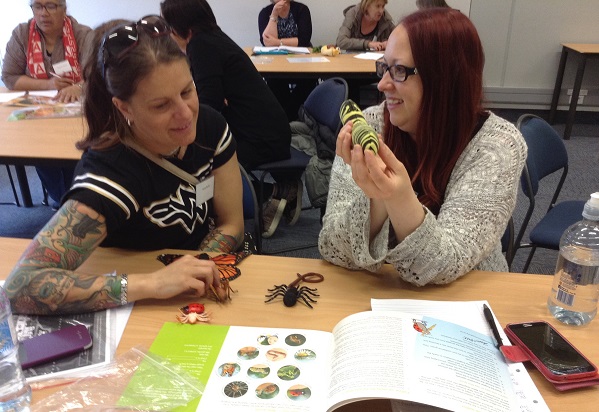
Kiwi teacher, author and publisher, Sharon Holt, specialises in helping fellow teachers gain confidence in speaking the language. Start with one syllable at a time, she says…
“For the first 42 years of my life, I knew almost nothing about the Māori language. I had no idea that I was pronouncing our Māori place names incorrectly, and I knew no one who spoke Māori. When I took my first tentative steps into te reo Māori in 2002, I was too scared to even say the word “Māori”.
“Starting a Māori language journey at Te Wānanga o Aotearoa 15 years ago has changed my life. The tutors and fellow students I met there encouraged me to believe that, even though I am non-Māori, the Māori language is for me as well, and I quickly grew a passion for this beautiful language. Now, just 15 years later, I have published many te reo books and singalong resources, and teach te reo pronunciation.
“Part way into my journey, I realised that many of my teaching colleagues lacked confidence in their pronunciation of te reo, just as I had. They told me that the resources available to them were difficult to use, and they had no idea how to gain the confidence they needed to go beyond greetings, commands, colours and numbers. My thoughts turned to repetitive sentence structures sung to a catchy tune – and the idea for Te Reo Singalong books was born.
“The feedback on these books was very positive, and followed by requests for pronunciation workshops. During these, I explain that the key to pronunciation is to break Māori words at every vowel. But the most important thing we can do is to put that knowledge into practice, with every Māori word and phrase we use – including our place names.
“I have a special passion for respecting Māori by pronouncing our place names correctly. I remind teachers of the importance they place on the correct pronunciation of the names of the children they teach. And I ask “why should the pronunciation of our place names be any different?” Every Māori place name has a unique history and a story to tell. I believe that pronouncing those place names incorrectly is disrespecting that place and its story.
“While incorrect pronunciation is not deliberate, but rather the result of poor role modelling and years of habit, I believe that teachers have a special responsibility to make the effort to get it right. As teachers, we may be the only role models that students have for the correct pronunciation of te reo Māori. They learn to speak by copying what those around them say. If we get it right, they will follow.
“I believe we can learn a lot from the way children learn language. Babies and toddlers don’t start speaking in sentences. They start by practising sounds, moving on to words and then phrases. It takes a while before young children learn to speak in full sentences. Surely learning a second language such as Māori should be done in the same way. We should start by perfecting the sounds of the language. Then we should use those sounds to pronounce single words well, before moving on to simple phrases.
“When I work with teachers in pronunciation workshops, I encourage them to go back to basics and perfect the sounds of the vowels first. What’s the point in saying “kia ora” if we haven’t learned the correct pronunciation of that phrase? You may be surprised to learn that many people pronounce that basic greeting incorrectly.
“Most people say “Ki ora” instead of “Kia ora”. There are no silent letters in the Māori language, so we can’t leave out the “a” at the end of “kia”. Most Māori speakers say “Ki / ao / ra”, which is the correct pronunciation.
“To learn more about te reo pronunciation, you can watch some of the short videos on my facebook page: Pronunciation Signposts in Te Reo Māori.”
The much-delayed English draft curriculum is now out for consultation, generating discussion from teachers.
Research from AUT demonstrates arts, culture and recreation have positive impacts on all aspects of…
How effective has the school phone ban been in achieving its aims? Researchers from the…
School camps and excursions deliver hands on learning experiences, helping to consolidate classroom learning.
Innovations in AV technologies present new opportunities to engage with students. We look at how…
A new report from the University of Auckland’s Our Voices Project asks young people what…
This website uses cookies.